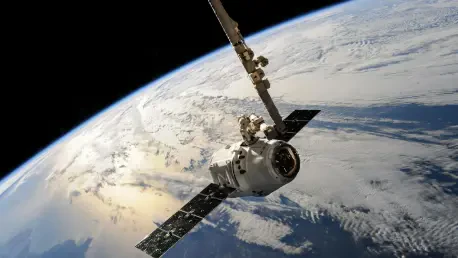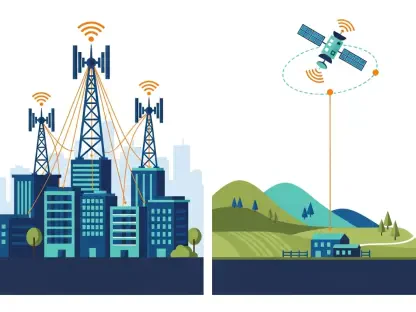The forthcoming TRACERS mission, supported by NASA and SpaceX, is an anticipated venture set to broaden our understanding of Earth’s magnetosphere and space weather phenomena. This groundbreaking project symbolizes a cornerstone in scientific and technological exploration. Scheduled for launch via SpaceX’s Falcon 9 rocket on July 22, from the Vandenberg Space Force Base in California, the mission promises to delve deeply into the complexities of magnetic reconnection. This mission is part of a larger effort to discern how solar activity interfaces with Earth’s magnetic field. These interactions can profoundly impact Earth’s atmosphere, power grids, communication satellites, and pose risks to astronauts. By examining these phenomena, TRACERS promises insights that could mitigate the negative effects these solar interactions have on systems critical to modern technological infrastructure.
Investigating Magnetic Reconnection
Understanding Magnetic Reconnection Dynamics
The core objective of the TRACERS mission is to explore the mechanics of magnetic reconnection. This is a vital process that arises when the Sun’s activity interacts with Earth’s magnetic field, leading to a conversion of magnetic energy into kinetic energy through solar wind interactions. The transformation alters local magnetic field lines, a phenomenon that could significantly impact Earth’s atmosphere. By deciphering these processes, scientists hope to address the adverse implications space weather might have on satellite operations and electrical grids. The tandem satellites employed in the mission will chart this complex interactivity, gathering data crucial for modeling and predictions. By orbiting in a sun-synchronous path, the satellites will consistently obtain data over identical geographical areas, enabling accurate and repeatable observations under similar lighting conditions. Such meticulous research contributes profoundly to the field of heliophysics, fundamentally enhancing our knowledge of solar phenomena and associated space weather.
The Significance of TRACERS in Space Weather Predictions
The TRACERS mission endeavors to refine predictive capabilities and strategies to shield susceptible systems from the unpredictable nature of space weather. Understanding magnetic reconnection can yield solutions to protect satellites and astronauts from harmful conditions. As these magnetic phenomena unfold, they have the potential to disrupt vital technological frameworks, a concern prevalent with the increasing reliance on space-dependent technologies. By developing a deeper understanding of these magnetic processes, TRACERS is instrumental in crafting strategies aimed at reinforcing the resilience of critical infrastructures. This preventative approach serves not only to preserve space-borne systems but also enhances readiness against space weather-induced disruptions. The mission, by offering refined models and predictive systems, positions itself as a key player in enhancing the robustness of both Earth-based and space-centric technologies.
Complementary Payloads Enhance Exploration
Athena EPIC SmallSat and Its Innovative Approach
Amid the TRACERS mission, several additional payloads funded by NASA will be launched simultaneously, amplifying the scientific scope of the expedition. One noteworthy addition is the Athena EPIC SmallSat. This payload introduces an economical, versatile approach to deploying remote-sensing instruments in orbit. By showcasing innovation and flexibility, Athena EPIC aims to lower costs associated with space missions while maintaining sophisticated operational capabilities necessary for comprehensive data collection and analysis. The integration of advanced technology streamlines processes that typically demand extensive resources, aligning well with current trends toward budget-conscious yet scientifically potent missions. This initiative undoubtedly revolutionizes small satellite technology deployment, offering adaptable methods that pave the way for future space explorations conducted efficiently and economically.
Innovative Space Communications Demonstration
Another significant payload launching with TRACERS is the Polylingual Experimental Terminal (PExT) technology demonstration. Managed by NASA’s Space Communications and Navigation (SCaN) Program, this pioneering demonstration highlights the capability of seamless transitions between varying communication networks in space. Comparable to terrestrial mobile phones that seamlessly switch networks, PExT is set to show how space missions can navigate diverse communication channels effectively. Ensuring robust communication systems in space is paramount for maintaining control and data flow, especially as the landscape of space exploration continues to evolve. The successful implementation of such technology stands to redefine conventional communication paradigms, offering flexibility and reliability that could transform mission dynamics significantly.
Revolutionizing Satellite Protection
REAL CubeSat’s Role in Understanding Radiation Belts
The TRACERS mission will also feature the deployment of the Relativistic Electron Atmospheric Loss (REAL) CubeSat, spearheaded by Dartmouth College. The objective of this CubeSat is to investigate how high-energy particles from Earth’s radiation belts dissipate into the atmosphere. This endeavor holds substantial promise for developing strategies to safeguard satellites and other technological systems from the detrimental effects of radiation. Insights gleaned from this research can inform protective measures aimed at mitigating radiation impacts on satellite electronics and instrumentation. As CubeSats continue establishing themselves as invaluable tools in atmospheric and space research, REAL marks an important milestone for New Hampshire’s innovation in space science. Its maiden flight represents a crescendo in utilizing CubeSats for pivotal scientific advancements while aligning with NASA’s cost-effective launch initiatives.
The Future of Small Satellite Technology
REAL’s launch under NASA’s CubeSat Launch Initiative emphasizes the expanding role of small satellite technology in achieving scientific goals. This initiative facilitates more affordable access to space for educational and non-profit entities within the United States, offering platforms for significant research at relatively low costs. Through CubeSats, diverse scientific inquiries are pursued, extending the reach and capabilities of various fields of study. REAL, like others before it, represents a burgeoning trend favoring sustaining scientific discovery through accessible technology. The emphasis on practical, budget-friendly solutions is reflective of a broader movement attempting to democratize access to space exploration, thereby encouraging academic institutions to engage actively in space research contributing to global knowledge bases.
Collaborative Efforts and Future Implications
Interdisciplinary Collaboration Among Institutions
TRACERS embodies interdisciplinary collaboration, pooling expertise from institutions such as the University of Iowa, which leads the mission with contributions from the Southwest Research Institute in San Antonio, Texas, and institutions like UCLA and UC Berkeley. The shared expertise enhances the mission’s capacity to achieve its scientific goals, with each institution taking responsibility for different instrumentation aboard the satellites. This collaborative effort is coordinated under the stewardship of NASA’s Goddard Space Flight Center, demonstrating a model for integrative scientific exploration. Such collaboration enriches the mission’s scientific potential, drawing upon a rich tapestry of experience and specialization across geophysics and engineering disciplines. This multifaceted partnership is a testament to how collaborative ventures can propel scientific understanding forward, opening up newer arenas of exploration and discovery.
Paving the Future of Space Explorations
The main goal of the TRACERS mission is to study the mechanics of magnetic reconnection, a key process that occurs when the Sun’s activity interacts with Earth’s magnetic field. This interaction leads to the conversion of magnetic energy into kinetic energy, driven by solar wind dynamics, altering local magnetic field lines. Such changes could significantly affect Earth’s atmosphere, with implications for satellite operations and electrical grids affected by space weather.
The mission utilizes tandem satellites to map these intricate interactions, collecting essential data for accurate modeling and prediction. Orbiting in a sun-synchronous path ensures that the satellites consistently gather data from the same geographical regions under similar lighting conditions, allowing for precise and repeatable observations. This careful research greatly contributes to heliophysics, enhancing our understanding of solar phenomena and the associated impacts on space weather. By unraveling these processes, scientists aim to mitigate adverse effects on vital infrastructure and improve predictive capabilities.









